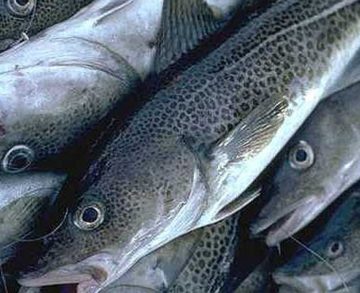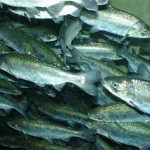Tag Archives: red-snapper
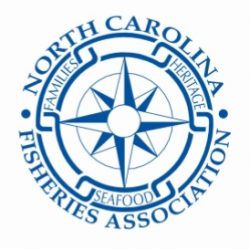
North Carolina Fisheries Association Weekly Update, July10, 2023 – Red Snapper, Plain and Simple
My last couple articles seemed to connect with many readers, some good connections and some maybe not so good. I personally received some really good feedback and I was also forwarded several emails and websites who quoted my articles. I always love seeing our newsletters getting out there for more people to read and hopefully get people more engaged in the issues. I know most of the people reading this already know, but for some of the new readers who maybe were misled by some of the people sharing our message, I feel like I needed to clarify a couple things. >click to read< 12:50

One fish, two fish: The local commercial fishing industry faces daunting challenges despite high demand
It’s just after noon on an unseasonably warm Friday in early spring. Naples has had a string of cold days and now this hot one, but no one standing in line in front of Mike’s Bait House in East Naples seems to mind. The line extends from the street, where cars are parked nose-to-bumper. It snakes through the parking lot and winds beside a black extended-cab Chevy. In the back of the truck, two young men from Dilly’s Fish Co, owned by Tim “Dilly” Dillingham, lean over Grizzly coolers. “What’s the difference between a lane snapper and a red snapper?” a man in line calls out. “A red snapper’s going to be a little more firm,” one of the young men in the back of the truck answers. That’s Dominick Biagetti, Dillingham’s right-hand man. Biagetti serves as boat captain and crew, and he helps with offloading and delivery. He has a seascape tattooed on his leg, an underwater reef scene with a turtle and a moray eel. >click to read< 12:10

Study shows three times as many Red Snapper as previously estimated in the Gulf of Mexico
The $12 million Great Red Snapper Count estimated that the Gulf holds about 110 million adult red snapper, those at least 2 years old. A 2018 National Oceanic and Atmospheric Administration marine fisheries’ estimate was about 36 million. Clay Porch, director of NOAA’s Southeast Fisheries Science Center Director in Miami, said peer reviewers will be going over the science for the Gulf of Mexico Fisheries Management Council, which is likely to consider revising quotas in April, Porch said Tuesday. >click to read< 14:24
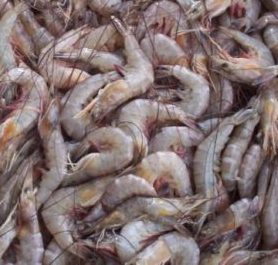
Gulf Council Votes to Relax Quotas on Shrimp Fishing
Today, the Gulf of Mexico Fishery Management Council took final action on shrimp Amendment 18, allowing shrimpers to increase the amount of fishing allowed under the red snapper rebuilding plan. The Southern Shrimp Alliance advocated for this change for more than two years. The Council was unanimous in its decision. Once again, the Alliance won its arguments before regulators by presenting scientific research. The Council’s actions acknowledge that the shrimp fishery has made a substantial contribution to the rebuilding of the red snapper stock. Since the plan went into effect, shrimpers have achieved 100% compliance with the red snapper management plan’s goals. >click to read<17:28

The Sting – Houston restaurants, fish markets cited for illegally purchasing game fish
Nineteen Houston-area restaurants and fish markets have racked up more than 150 citations after they were caught illegally purchasing game fish from undercover officers during a recently completed sting, officials announced Tuesday. A two-year operation conducted by the Texas Parks and Wildlife Department’s law enforcement division found that the restaurants and fish markets were willing to bypass legitimate commercial fish dealers and purchase saltwater fish in the black market. Those fish included sea trout, red drum (redfish), red snapper, Southern flounder, black drum, catfish and croaker. >click to read<18:21

“We live and die by stock assessments,” – Fishermen seek more responsive regulations
“We live and die by stock assessments,” said Jimmy Hull, a commercial fisherman from Ormond Beach, Fla. His statement during an informal question-and-answer period held by the South Atlantic Fishery Management Council is part of an overall grievance a significant number of fishermen have with the fishery management process — that it’s not responsive to current conditions in fish stocks, and instead responding to conditions months or years earlier. >click to read< 08:46

Agreement reached in lawsuit over extension of red snapper season
The U.S. Department of Commerce has reached an agreement with two environmental advocacy groups that took it to court over a decision to extend the recreational red snapper fishing season by 39 days in the Gulf of Mexico. Under the agreement, approved Wednesday, 20 December by U.S. District Judge Amy Berman Jackson, the government announced that the extension of the 2017 season “was a one-time action” it has opted not to defend the decision at this time. Further, government officials plan to give a 2018 recreational red snapper season projection by early February and finalize the length of the season around 20 April. Ocean Conservancy and the Environmental Defense Fund,,, click here to read the story 09:54
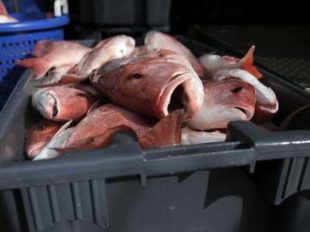
Red snapper imperiled by Trump team’s gift to the yachting set
As a chef in New Orleans, I rely on fish and seafood for my livelihood. The seafood from the Gulf of Mexico and its waterways is integral to my menu and to every restaurant that benefits from New Orleans’ reputation as a world-class food city. What would New Orleans’ culinary tradition be without fresh catch for our seafood gumbo, oysters Rockefeller, crawfish etouffée, and shrimp po-boys? Along with other chefs, fishers, and eaters, I have relied for years on bipartisan and science-based management of Gulf fish stocks to maintain this precious natural resource. click here to read the stuff10:38
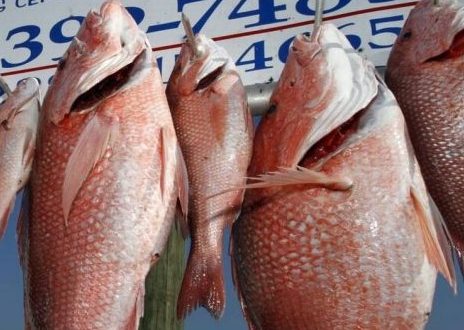
How many red snapper are actually in the Gulf? These scientists are going to find out
A team of 21 scientists from universities and state and federal agencies will attempt to answer one of the Gulf’s perplexing questions: How many red snapper are there? “American communities across the Gulf of Mexico depend on their access to, as well as the longterm sustainability of, red snapper,” said Secretary of Commerce Wilbur Ross in a press release announcing the formation of the team. “I look forward to the insights this project will provide as we study and manage this valuable resource.” The panel convened by the Mississippi-Alabama Sea Grant Consortium was awarded $9.5 million in federal funds for the project through a competitive research grant process and will receive another $2.5 million from the universities. click here to read the story 22:53
Alabama Red Snapper Reporting System – Snapper checks show fear of exceeding quota unfounded
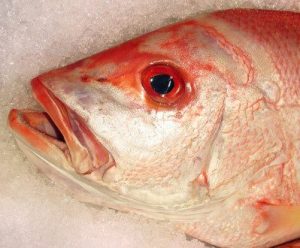 Preliminary numbers from the Alabama Red Snapper Reporting System, aka Snapper Check, indicate the fear that Alabama anglers would exceed the 2017 quota were unfounded. “Using the Alabama Snapper Check numbers, we’re going to be well within the historic allocation for Alabama, so the 39-day season did not put us over, which was a concern for the commercial fishing community and part of the charter fishing community,” said Scott Bannon, Acting Director of the Alabama Marine Resources Division (MRD). “Now the concern we have is what the MRIP (Marine Recreational Information Program) numbers will show, and those numbers are not out yet.” click here to read the story 09:11
Preliminary numbers from the Alabama Red Snapper Reporting System, aka Snapper Check, indicate the fear that Alabama anglers would exceed the 2017 quota were unfounded. “Using the Alabama Snapper Check numbers, we’re going to be well within the historic allocation for Alabama, so the 39-day season did not put us over, which was a concern for the commercial fishing community and part of the charter fishing community,” said Scott Bannon, Acting Director of the Alabama Marine Resources Division (MRD). “Now the concern we have is what the MRIP (Marine Recreational Information Program) numbers will show, and those numbers are not out yet.” click here to read the story 09:11
SAFMC – Officials OK red snapper fall season
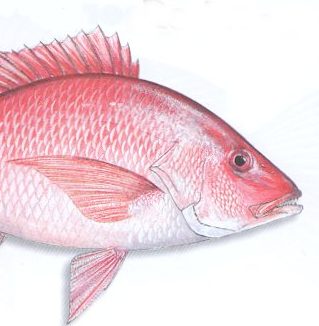 Federal fishery officials approved a plan Monday to allow Southeastern anglers to harvest red snapper in the Atlantic Ocean later this fall, which would be the first open season for the popular game fish since 2014. Under the plan, the season would last six to 12 days spread out over several three-day weekends and would begin at the end of October. The decision must be approved by NOAA Fisheries, the federal agency that oversees all fishing regulations in federal waters. If the agency approves the decision, it will set the exact number of days the season will last and when it will start. The decision also opens red snapper to commercial fishing, although boats will be limited to just 75 pounds of fish per trip. click here to read the story 19:12
Federal fishery officials approved a plan Monday to allow Southeastern anglers to harvest red snapper in the Atlantic Ocean later this fall, which would be the first open season for the popular game fish since 2014. Under the plan, the season would last six to 12 days spread out over several three-day weekends and would begin at the end of October. The decision must be approved by NOAA Fisheries, the federal agency that oversees all fishing regulations in federal waters. If the agency approves the decision, it will set the exact number of days the season will last and when it will start. The decision also opens red snapper to commercial fishing, although boats will be limited to just 75 pounds of fish per trip. click here to read the story 19:12
South Atlantic Red snapper season vote upcoming
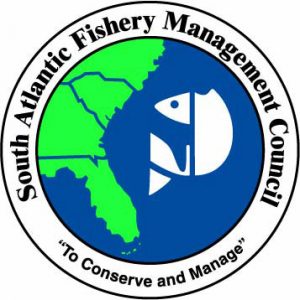 The long push to reopen red snapper fishing off the Southeastern coast comes to a head Monday when the South Atlantic Fishery Management Council will vote on one of five alternatives. Folks involved in recreational and charter fishing have advocated that the snapper stock is strong. Savannah charter fisherman Zack Bowen said at the fisheries council meeting on Jekyll Island in March, “The recreational anglers are mad as hell” about the fishery closure and charter operations are losing business because of unavailable snapper. Also, the regional fisheries administrator said at the March meeting that he thinks the population is in its best condition in 40 years. The preferred alternative is No. 4, which sets the commercial limit at 124,815 pounds and recreational limit at 29,656 fish. click here to read the story 09:49
The long push to reopen red snapper fishing off the Southeastern coast comes to a head Monday when the South Atlantic Fishery Management Council will vote on one of five alternatives. Folks involved in recreational and charter fishing have advocated that the snapper stock is strong. Savannah charter fisherman Zack Bowen said at the fisheries council meeting on Jekyll Island in March, “The recreational anglers are mad as hell” about the fishery closure and charter operations are losing business because of unavailable snapper. Also, the regional fisheries administrator said at the March meeting that he thinks the population is in its best condition in 40 years. The preferred alternative is No. 4, which sets the commercial limit at 124,815 pounds and recreational limit at 29,656 fish. click here to read the story 09:49
Legislative Bills would open red snapper harvest out to at least 25 miles
 Louisiana senators and representatives have introduced companion legislation in Congress that would give states management authority of red snapper out to 25 miles or 25 fathoms, whichever is greater, off their coastlines. Currently, states control red snapper out to nine nautical miles. Both Louisiana senators, Bill Cassidy and John Kennedy, introduced the bill in the Senate, while Reps. Garret Graves, Cedric Richmond and Clay Higgins joined seven other representatives to propose the House bill. The legislation is designed to ensure Gulf of Mexico anglers have broader access to rebounding red snapper stocks during 2018 and beyond. This year, the Commerce Department gave recreational anglers 39 additional days in federal waters after NOAA Fisheries set a three-day recreational season. That move is being contested in court, and without legislation to address the issue, recreational anglers could be locked out of the fishery in 2018. click here to read the story 16:01
Louisiana senators and representatives have introduced companion legislation in Congress that would give states management authority of red snapper out to 25 miles or 25 fathoms, whichever is greater, off their coastlines. Currently, states control red snapper out to nine nautical miles. Both Louisiana senators, Bill Cassidy and John Kennedy, introduced the bill in the Senate, while Reps. Garret Graves, Cedric Richmond and Clay Higgins joined seven other representatives to propose the House bill. The legislation is designed to ensure Gulf of Mexico anglers have broader access to rebounding red snapper stocks during 2018 and beyond. This year, the Commerce Department gave recreational anglers 39 additional days in federal waters after NOAA Fisheries set a three-day recreational season. That move is being contested in court, and without legislation to address the issue, recreational anglers could be locked out of the fishery in 2018. click here to read the story 16:01
Conservation groups sue to stop snapper season extension
 Several conservation groups have filed a lawsuit against the federal extension of red snapper season recently announced by the U.S. Department of Commerce. In the suit, the groups said the decision jeopardizes the ongoing recovery of Gulf red snapper by increasing the federal private angler fishing season thirteen-fold. Chris Dorsett, vice president of conservation policy and programs for the Ocean Conservancy (one of the groups involved in the suit), spoke out against the extension of the federal season.,,, “This lawsuit is without merit,” Byrne said. “A lot of work went into this emergency rule put forward by the Department of Commerce. They went through a lot of study and worked with the individual Gulf states to get the state seasons in line with the federal seasons. The Department of Commerce did their homework here, and I have confidence that this lawsuit from a liberal Washington, D.C. environmental group will not ultimately be successful.” click here to read the story 09:18
Several conservation groups have filed a lawsuit against the federal extension of red snapper season recently announced by the U.S. Department of Commerce. In the suit, the groups said the decision jeopardizes the ongoing recovery of Gulf red snapper by increasing the federal private angler fishing season thirteen-fold. Chris Dorsett, vice president of conservation policy and programs for the Ocean Conservancy (one of the groups involved in the suit), spoke out against the extension of the federal season.,,, “This lawsuit is without merit,” Byrne said. “A lot of work went into this emergency rule put forward by the Department of Commerce. They went through a lot of study and worked with the individual Gulf states to get the state seasons in line with the federal seasons. The Department of Commerce did their homework here, and I have confidence that this lawsuit from a liberal Washington, D.C. environmental group will not ultimately be successful.” click here to read the story 09:18
Environmental groups suing Trump administration for extending red snapper season
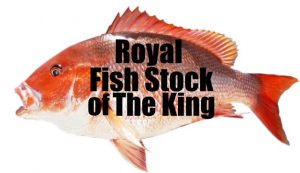 Two environmental groups are suing the Trump administration for stretching the red snapper season in the Gulf of Mexico. The federal government said the economic benefit from allowing weekend fishing this summer by recreational anglers in federal waters outweighs the harm to the red snapper species, which is still recovering from disastrous overfishing. Gulf state officials had lobbied for and praised the change, but the lawsuit says the decision violated several laws by ignoring scientific assessments, promoting overfishing, and failing to follow required procedures. It was filed Monday for the Ocean Conservancy and the Environmental Defense Fund. click here to read the story 13:13
Two environmental groups are suing the Trump administration for stretching the red snapper season in the Gulf of Mexico. The federal government said the economic benefit from allowing weekend fishing this summer by recreational anglers in federal waters outweighs the harm to the red snapper species, which is still recovering from disastrous overfishing. Gulf state officials had lobbied for and praised the change, but the lawsuit says the decision violated several laws by ignoring scientific assessments, promoting overfishing, and failing to follow required procedures. It was filed Monday for the Ocean Conservancy and the Environmental Defense Fund. click here to read the story 13:13
Before You Eat That Red Snapper: The Fish Is Basically Plagued by Endless Fraud
 Welcome to Before You Eat That, which broaches all the annoying food subjects that make you highly uncomfortable. This is for all you schadenfreude-obsessed killjoys out there. So far, we’ve covered the continuing saga of all things seafood: The is-it-too-smart-to-eat octopus, the oyster and its massive gonad, the sad plight of the disappearing freshwater eel, and now onward to the magnet for all things fraud, Red Snapper. Red snapper is one hell of a divisive fish. Among Texas anglers, big-time regulations make it a contentious subject between recreational and commercial factions. Among restaurants in America, the Congressional Research Service reported in 2015, 77 percent of red snapper being served in the country was not actually red snapper at all,,, Click here to read the article 21:11
Welcome to Before You Eat That, which broaches all the annoying food subjects that make you highly uncomfortable. This is for all you schadenfreude-obsessed killjoys out there. So far, we’ve covered the continuing saga of all things seafood: The is-it-too-smart-to-eat octopus, the oyster and its massive gonad, the sad plight of the disappearing freshwater eel, and now onward to the magnet for all things fraud, Red Snapper. Red snapper is one hell of a divisive fish. Among Texas anglers, big-time regulations make it a contentious subject between recreational and commercial factions. Among restaurants in America, the Congressional Research Service reported in 2015, 77 percent of red snapper being served in the country was not actually red snapper at all,,, Click here to read the article 21:11
Feds (No EDF and Pew) complain new Red Snapper season will hurt species’ recovery
 The U.S. Commerce Department says recreational anglers in the Gulf of Mexico will have 39 more days to fish federal waters for red snapper,,,However, an environmental group and a charter captains’ association estimate that private anglers will take nearly triple their allocated 3.4 million-pound (1.5 million kilogram) quota of the sport and panfish under the plan, potentially canceling next year’s recreational season entirely.,,“The current system is failing private anglers and they deserve a fix,” Mike Jennings, president of the Charter Fisherman’s Association said in a prepared statement.,,, Earlier Wednesday, his group and the Environmental Defense Fund had emailed Commerce Secretary Wilbur Ross, asking him to delay any decision until he had good scientific estimates of the likely catch. click here to read the story 16:45
The U.S. Commerce Department says recreational anglers in the Gulf of Mexico will have 39 more days to fish federal waters for red snapper,,,However, an environmental group and a charter captains’ association estimate that private anglers will take nearly triple their allocated 3.4 million-pound (1.5 million kilogram) quota of the sport and panfish under the plan, potentially canceling next year’s recreational season entirely.,,“The current system is failing private anglers and they deserve a fix,” Mike Jennings, president of the Charter Fisherman’s Association said in a prepared statement.,,, Earlier Wednesday, his group and the Environmental Defense Fund had emailed Commerce Secretary Wilbur Ross, asking him to delay any decision until he had good scientific estimates of the likely catch. click here to read the story 16:45
Department of Commerce Announces Changes to the 2017 Gulf of Mexico Red Snapper Private Angler Recreational Season
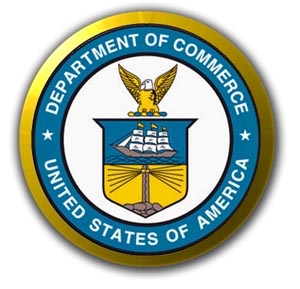 For the first time in a decade, Federal authorities and the five Gulf States have agreed to align Federal and State private angler red snapper fishing seasons for the remainder of the summer, and the Department of Commerce has re-opened the 2017 private angler recreational season for 39 weekend days and holidays. Majority Whip Scalise and other Members of Congress were instrumental in reaching this agreement. The agreement reached between the Secretary of Commerce and the five Gulf States is a significant step forward in building a new Federal-State partnership in managing the Gulf of Mexico red snapper stock.The Departments rule does not change the quota or season length for the federally permitted for-hire component of the recreational fishery or the commercial individual fishing quota program and the 2017 commercial quota. Click here to read the press release 18:13
For the first time in a decade, Federal authorities and the five Gulf States have agreed to align Federal and State private angler red snapper fishing seasons for the remainder of the summer, and the Department of Commerce has re-opened the 2017 private angler recreational season for 39 weekend days and holidays. Majority Whip Scalise and other Members of Congress were instrumental in reaching this agreement. The agreement reached between the Secretary of Commerce and the five Gulf States is a significant step forward in building a new Federal-State partnership in managing the Gulf of Mexico red snapper stock.The Departments rule does not change the quota or season length for the federally permitted for-hire component of the recreational fishery or the commercial individual fishing quota program and the 2017 commercial quota. Click here to read the press release 18:13
Ed Killer: Can a protected fish be a nuisance?
 Next week, in a hotel ballroom in Ponte Vedra Beach, there will be a lot of discussion about a controversial fish. Red snapper, a fish protected from harvest in federal waters since 2009, will be one of several species of fish evaluated during the South Atlantic Fishery Management Council’s quarterly meeting June 12-16. The Snapper Grouper advisory committee will convene Tuesday and Wednesday to discuss a variety of issues about some 80 species of fish they are charged with managing. Chief among the issues will be complaints from fishermen who claim the red snapper has risen to nuisance phase in its population numbers off Florida’s coast.,, But red snapper fishing in Florida is a little like Charles Dickens’ “Tale of Two Cities.” click here to read the article 14:45
Next week, in a hotel ballroom in Ponte Vedra Beach, there will be a lot of discussion about a controversial fish. Red snapper, a fish protected from harvest in federal waters since 2009, will be one of several species of fish evaluated during the South Atlantic Fishery Management Council’s quarterly meeting June 12-16. The Snapper Grouper advisory committee will convene Tuesday and Wednesday to discuss a variety of issues about some 80 species of fish they are charged with managing. Chief among the issues will be complaints from fishermen who claim the red snapper has risen to nuisance phase in its population numbers off Florida’s coast.,, But red snapper fishing in Florida is a little like Charles Dickens’ “Tale of Two Cities.” click here to read the article 14:45
Coastal Alabama Rep. slams NOAA ‘junk science’ behind shortest red snapper season ever
 Alabama Rep. Bradley Byrne shares the frustration of most in his district when it comes to the federal government’s overregulation of red snapper fishing. According to him, Coastal Alabamians are infuriated over the announcement that the much-anticipated red snapper season will only last a pitifully short three days. He believes they have a right to be mad. “[My constituents] have every reason to be outraged, because they have a right to fish in the waters of the United States, and they’re being deprived of that right by junk science. Put junk science in, you’re going to get a bad result out, and that’s exactly what we’ve got here,” Rep. Byrne said. Every year, the National Marine Fisheries Service (NMFS), which is managed by the National Oceanic and Atmospheric Administration (NOAA), announces how long the fishing season will last based on the size and stock of red snapper fish. click here to read the story 13:45
Alabama Rep. Bradley Byrne shares the frustration of most in his district when it comes to the federal government’s overregulation of red snapper fishing. According to him, Coastal Alabamians are infuriated over the announcement that the much-anticipated red snapper season will only last a pitifully short three days. He believes they have a right to be mad. “[My constituents] have every reason to be outraged, because they have a right to fish in the waters of the United States, and they’re being deprived of that right by junk science. Put junk science in, you’re going to get a bad result out, and that’s exactly what we’ve got here,” Rep. Byrne said. Every year, the National Marine Fisheries Service (NMFS), which is managed by the National Oceanic and Atmospheric Administration (NOAA), announces how long the fishing season will last based on the size and stock of red snapper fish. click here to read the story 13:45
Recreational IFQ’s? Louisiana wants to give 150 anglers almost unlimited access to red snapper
 Despite vehement opposition from recreational-fishing advocacy groups, the Louisiana Department of Wildlife and Fisheries says it has worked up a pilot program that will award a significant portion of the state’s red snapper haul to select recreational anglers. The department announced the plan in a Thursday afternoon press release, just one day after meeting with pro-recreational fishing groups and mentioning nothing about the program. The structure would be similar to what exists in the commercial sector, where fishers have been awarded percentages of the overall commercial quota, and may harvest their red snapper at any time during the year. The system, called individual fishing quotas, has been panned by recreational-fishing organizations as well as good-government groups because it has set up so-called Sea Lords, who own quota and make hundreds of thousands of dollars on a public resource without ever leaving the dock. click here to read this story 20:20
Despite vehement opposition from recreational-fishing advocacy groups, the Louisiana Department of Wildlife and Fisheries says it has worked up a pilot program that will award a significant portion of the state’s red snapper haul to select recreational anglers. The department announced the plan in a Thursday afternoon press release, just one day after meeting with pro-recreational fishing groups and mentioning nothing about the program. The structure would be similar to what exists in the commercial sector, where fishers have been awarded percentages of the overall commercial quota, and may harvest their red snapper at any time during the year. The system, called individual fishing quotas, has been panned by recreational-fishing organizations as well as good-government groups because it has set up so-called Sea Lords, who own quota and make hundreds of thousands of dollars on a public resource without ever leaving the dock. click here to read this story 20:20
Snapper silliness still has anglers seeing red
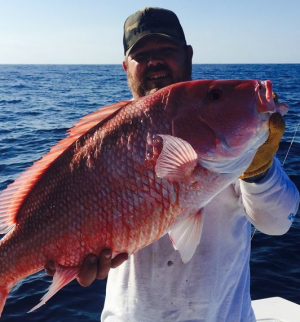 The bumper sticker on the white Ford pickup truck could not have been more clear: “National Marine Fisheries Service: Destroying Fishermen and Their Communities Since 1976!” Poignant. Harsh, even. But tame by today’s standards. The sticker made me think of an issue affecting offshore bottom fishermen who depart inlets between the Treasure Coast and South Carolina. I’m no mathematician, but something fishy is going on with red snapper statistics. Red snapper, a larger cousin of mutton snapper and mangrove snapper, resides in waters of the Gulf of Mexico and the Atlantic Ocean. It is presently off limits to harvest by east coast anglers, and has been since 2010. The reason? Because 10 years ago, fisheries statisticians determined that the red snapper fishery was “undergoing overfishing.” Along with “jumbo shrimp,” that expression is still one of my all-time favorite oxymorons. click to continue reading the story here 08:28
The bumper sticker on the white Ford pickup truck could not have been more clear: “National Marine Fisheries Service: Destroying Fishermen and Their Communities Since 1976!” Poignant. Harsh, even. But tame by today’s standards. The sticker made me think of an issue affecting offshore bottom fishermen who depart inlets between the Treasure Coast and South Carolina. I’m no mathematician, but something fishy is going on with red snapper statistics. Red snapper, a larger cousin of mutton snapper and mangrove snapper, resides in waters of the Gulf of Mexico and the Atlantic Ocean. It is presently off limits to harvest by east coast anglers, and has been since 2010. The reason? Because 10 years ago, fisheries statisticians determined that the red snapper fishery was “undergoing overfishing.” Along with “jumbo shrimp,” that expression is still one of my all-time favorite oxymorons. click to continue reading the story here 08:28
Zurik: Snapper barons slam FOX 8 probe, but Trump admin. may think otherwise
 An alliance of fishermen who make millions off a public resource wants us to retract all our stories from our “Hooked Up” series. The series showed how 50 fishermen can make $23 million a year from red snapper, and many never even drop a line in the water. The Gulf of Mexico Reef Fish Shareholders’ Alliance and its executive director, Buddy Guindon, sent us a 23-page letter, calling our stories sloppy and biased. Many of the complaints focus on statements made by subjects we interviewed for our stories. They include 20 separate citations of comments in our series by Congressman Garret Graves of Louisiana.,, Graves says he’s heard from congressmen from all over the country since our five-part series was broadcast. He thinks now is the time to change the system.,,,While the group of 50 fishermen have been unhappy with our reports, we’ve heard from dozens of others with positive comments, like a Florida commercial fisherman who wrote, “Your report hit home with all our concerns in regards to how unfair the small commercial fishermen are being treated and wrongly represented.”Read the story here 12:32
An alliance of fishermen who make millions off a public resource wants us to retract all our stories from our “Hooked Up” series. The series showed how 50 fishermen can make $23 million a year from red snapper, and many never even drop a line in the water. The Gulf of Mexico Reef Fish Shareholders’ Alliance and its executive director, Buddy Guindon, sent us a 23-page letter, calling our stories sloppy and biased. Many of the complaints focus on statements made by subjects we interviewed for our stories. They include 20 separate citations of comments in our series by Congressman Garret Graves of Louisiana.,, Graves says he’s heard from congressmen from all over the country since our five-part series was broadcast. He thinks now is the time to change the system.,,,While the group of 50 fishermen have been unhappy with our reports, we’ve heard from dozens of others with positive comments, like a Florida commercial fisherman who wrote, “Your report hit home with all our concerns in regards to how unfair the small commercial fishermen are being treated and wrongly represented.”Read the story here 12:32

Hooked Up!!! Sea lords and the secret votes that made them rich
The votes helped create the system that now allows 50 businesses and fishermen to control 81 percent of the nation’s commercial red snapper allocation. Those fishermen can make a total of $23 million every year. And the government gets nothing in return from the fishermen. “This is a public asset,” Congressman Garret Graves says. “You and I own this. The public owns this. You know, people always talk about [how] government needs to run like a business. Could you ever imagine a business saying, ‘Oh, here’s our inventory, and it’s free! You come in a grocery store, you take whatever you want.’ The vote predates Graves’ term in Washington. But last decade, Congress helped orchestrate it. The feds wanted to start what’s called an IFQ program, short for “individual fishing quota”. Fishermen would get an allocation to fish the entire year. Congress required three votes – first by a little-known public body called the Gulf of Mexico Fisheries Management Council, an 11-member body that’s primarily appointed by the five Gulf states. After the Gulf Council vote, Congress also required two votes by the commercial fishermen who already were permitted to fish for red snapper in the Gulf. And those are the votes that the federal government won’t let us see. Video, read the story here 11:09
HOOKED UP! PART II: Gulf Council chief talks about IFQ’s
 The Gulf of Mexico Fishery Management Council manages the fishery resources in the federal waters of the Gulf of Mexico. It’s one of eight regional fishery management councils in the United States. The Gulf Council essentially manages the fishery from the nine-mile mark out to the 200-mile limit. “Before the IFQ, we tried a variety of ways to address the race for fish that was taking place,” says Dr. Roy Crabtree, regional administrator for the Gulf Council. “We had a limited commercial quota for red snapper. The fishermen were catching it up as quick as they could. They were flooding the market with fish Fishery was closed most of the year, so we didn’t have year-round production. And we had safety-at-sea issues. Because fishermen were fishing in unsafe sea conditions. And we were having overruns of quota. Crabtree says the IFQ program was designed largely to address these problems. The article continues here 18:00
The Gulf of Mexico Fishery Management Council manages the fishery resources in the federal waters of the Gulf of Mexico. It’s one of eight regional fishery management councils in the United States. The Gulf Council essentially manages the fishery from the nine-mile mark out to the 200-mile limit. “Before the IFQ, we tried a variety of ways to address the race for fish that was taking place,” says Dr. Roy Crabtree, regional administrator for the Gulf Council. “We had a limited commercial quota for red snapper. The fishermen were catching it up as quick as they could. They were flooding the market with fish Fishery was closed most of the year, so we didn’t have year-round production. And we had safety-at-sea issues. Because fishermen were fishing in unsafe sea conditions. And we were having overruns of quota. Crabtree says the IFQ program was designed largely to address these problems. The article continues here 18:00
Coast Guard reports increase in seizures of Mexican vessels stealing Red Snapper
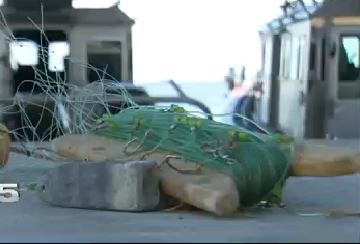 A recent study by the U.S. Coast Guard states hundreds of thousands of pounds of red snapper is taken illegally out of the waters by Mexican fishermen. U.S. fisherman Stephen Murphy said he knows they are after the red snapper. “You’re out there fishing and you look a mile away… It’s pretty obvious there’s a Mexican in a commercial boat out there with their long lines and gill nets bringing in thousands of pounds of fish,” he said. Murphy said the fishermen also use illegal catching nets. He said there needs to be more done to protect the fish. “There’s nobody out there patrolling… They can go out and fish for one night and get a thousand pounds of snapper,” he said. “(They’re) selling it for almost eight thousand dollars.” Video, read the story here 08:03
A recent study by the U.S. Coast Guard states hundreds of thousands of pounds of red snapper is taken illegally out of the waters by Mexican fishermen. U.S. fisherman Stephen Murphy said he knows they are after the red snapper. “You’re out there fishing and you look a mile away… It’s pretty obvious there’s a Mexican in a commercial boat out there with their long lines and gill nets bringing in thousands of pounds of fish,” he said. Murphy said the fishermen also use illegal catching nets. He said there needs to be more done to protect the fish. “There’s nobody out there patrolling… They can go out and fish for one night and get a thousand pounds of snapper,” he said. “(They’re) selling it for almost eight thousand dollars.” Video, read the story here 08:03
Charlie Melancon’s Department Of Wrongdoing And Falsehood
 Have you been paying attention to the chaos at hand with the Louisiana Department of Wildlife and Fisheries? It appears that there is a full three-ring circus going on with DWF and its secretary, the former Democrat congressman Charlie Melancon. And after eight months on the job it’s pretty clear that perception among the in-the-know crowd was largely correct. The department is awash in controversy, if not criminality, and those affected by it are furious. To full explain this, we should go back several years to a program set up at the federal level. The Gulf of Mexico Fishery Management Council, which is a federal commission set up to govern offshore fishing in the five Gulf states (Florida, Alabama, Mississippi, Louisiana and Texas), and the National Marine Fisheries Service set up something called the Individual Fishing Quota system, or IFQ, to govern commercial fishing for red snapper. Meaning, the federal government resorted to crony capitalism as a means to govern Gulf red snapper fisheries. If you were a big player in the red snapper harvest before the program got started, you were one of the cronies and your incumbency would be protected. Read the story here. 19:20
Have you been paying attention to the chaos at hand with the Louisiana Department of Wildlife and Fisheries? It appears that there is a full three-ring circus going on with DWF and its secretary, the former Democrat congressman Charlie Melancon. And after eight months on the job it’s pretty clear that perception among the in-the-know crowd was largely correct. The department is awash in controversy, if not criminality, and those affected by it are furious. To full explain this, we should go back several years to a program set up at the federal level. The Gulf of Mexico Fishery Management Council, which is a federal commission set up to govern offshore fishing in the five Gulf states (Florida, Alabama, Mississippi, Louisiana and Texas), and the National Marine Fisheries Service set up something called the Individual Fishing Quota system, or IFQ, to govern commercial fishing for red snapper. Meaning, the federal government resorted to crony capitalism as a means to govern Gulf red snapper fisheries. If you were a big player in the red snapper harvest before the program got started, you were one of the cronies and your incumbency would be protected. Read the story here. 19:20






